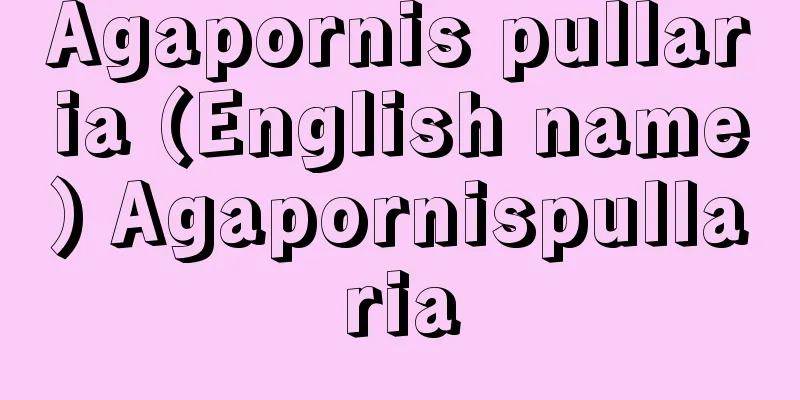Chishaku-in Temple

|
Located in Higashikawara-cho, Higashiyama-ku, Kyoto City, this temple is the head temple of the Chizan school of Shingon Buddhism. It is also called Gohyakubutchozan. Its principal image is Dainichi Nyorai. Chishaku-in was originally a branch temple of Daidenpo-in (Negoro-ji) in Kishu (Wakayama Prefecture), but it was burned down by Toyotomi Hideyoshi's soldiers in 1585 (Tensho 13). Genyu, who was the head of the school, escaped the disaster and was preaching in Kitano, Kyoto when he petitioned Tokugawa Ieyasu to rebuild Negoro-ji, and in 1600 (Keicho 5) he was granted part of the temple grounds of Toyokuni-sha Shrine and 200 koku of temple land. Later, Genyu was given Shoun-ji Temple, which Hideyoshi had built to commemorate the soul of his beloved son, Sutemaru, and rebuilt Chishaku-in Temple, becoming the first abbot of the temple. Since then, various temple halls and pagodas were gradually built, and many outstanding scholars gathered at the temple. In particular, the 7th abbot, Unsho, was highly educated and virtuous, and taught many students, said to have 3,000 followers. The temple also prospered with the construction of various temple halls. In 1682 (Tenwa 2), the main hall, abbot's quarters, and other parts of the temple were burned down, but the 8th abbot, Shinsei, restored the various halls, the 9th abbot, Yuban, re-established the Denpo Taikai, and the 10th abbot, Senkai, rebuilt the main hall. In addition, the 11th abbot, Kakugan, was the first to be appointed Daisojo (Grand Priest) as Chizan Nouke, and the 22nd abbot, Docho, was known as Chizan's foremost physicist for his efforts in teaching and transmission. The 32nd abbot, Kaiou, was well versed in Kushagaku (the study of the Buddhist teachings), and the 37th abbot, Shinkai, and the 39th abbot, Ryuei, also worked to teach Kushagaku (the study of the Buddhist teachings), and the tradition of this school was highly regarded as Chizan's Shosogaku (the study of the nature of the Buddhist teachings). In the early Meiji period, Kangakuin burned down and the school dormitory was left in ruins, but in 1872 (Meiji 5), it became the head temple of the Shingon sect along with Buzan Hasedera (Nara Prefecture). In 1885, together with Toyoyama, he called himself a member of the Shingon sect of Buddhism, but in 1900 (Meiji 33), he separated from the Toyoyama school and took the name Chizan school. [Katsumata Toshinori] Temple treasuresIn 1682, the main hall burned down, and in 1947, a fire broke out in the Shinden (Emperor's Hall), destroying 16 of the partition paintings. However, there are still 25 Momoyama period sliding door paintings, including "Pine Trees and Flowers," "Cherry Blossoms and Maples," and "Pine Trees and Plum Blossoms." These are believed to have been painted by Hasegawa Tohaku and his disciples, and are all designated as national treasures. Other national treasures include the "Pine Trees and Flowers" folding screen, the Diamond Sutra (from the Song Dynasty in China, painted by Zhang Xuzhi), and other nationally important cultural properties, including the colored silk painting "Portrait of the Peacock King" and the ink painting on silk "Waterfall." The garden in front of the Shoin is a nationally designated Place of Scenic Beauty. [Katsumata Toshinori] "Yamane Yuzo's Chishaku-in" (1964, Chuokoron-Bijutsu Shuppan)" ▽ "Mizuo Hiroshi's Chishaku-in" ("Complete Collection of Shohekiga Volume 1" 1966, Bijutsu Shuppan) Source: Shogakukan Encyclopedia Nipponica About Encyclopedia Nipponica Information | Legend |
|
京都市東山区東瓦(ひがしかわら)町にある真言(しんごん)宗智山派の総本山。五百仏頂山(ぶっちょうざん)と号する。本尊は大日如来(だいにちにょらい)。智積院はもと紀州(和歌山県)大伝法院(根来寺(ねごろじ))の一院であったが、1585年(天正13)に豊臣(とよとみ)秀吉の兵により焼失。学頭職(しき)であった玄宥(げんゆう)は難を逃れて京都の北野に布教していたとき徳川家康に根来寺再興を願い出、1600年(慶長5)豊国(とよくに)社の坊舎の一部と寺領200石を与えられた。その後さらに、秀吉が愛児棄丸(すてまる)の菩提(ぼだい)を弔うために建てた祥雲寺を与えられて、玄宥は智積院を再興、中興第1世とされる。以来、諸堂塔がしだいに建立され、多くの優れた学匠が集まった。ことに第7世運敞(うんしょう)は学徳ともに高く、多くの学徒を教導してその門下3000といわれ、また諸堂を造営して寺門が繁栄した。1682年(天和2)金堂、方丈などを焼失したが、第8世信盛(しんせい)は諸堂を復興し、第9世宥鑁(ゆうばん)は伝法大会を再興し、第10世専戒(せんかい)は金堂を再建した。また、第11世覚眼(かくがん)は智山能化(のうけ)として初めて大僧正(だいそうじょう)に任ぜられ、第22世動潮(どうちょう)は講学伝授に努めて智山第一の事相家といわれた。第32世海応(かいおう)は倶舎(くしゃ)学に通じ、第37世信海(しんかい)、第39世隆栄(りゅうえい)も倶舎学の講学に努め、その学門の伝統は智山の性相(しょうそう)学として高く評価された。明治初年に勧学院が炎上し、学寮も荒廃したが、1872年(明治5)豊山長谷寺(ぶざんはせでら)(奈良県)とともに新義真言宗総本山となった。1885年、豊山とともに真言宗新義派を称したが、1900年(明治33)豊山派と分離して智山派を称した。 [勝又俊教] 寺宝1682年、金堂を焼失、また1947年(昭和22)に宸殿(しんでん)から出火して障壁画16面を焼失したが、いまも豪放華麗な桃山時代の襖絵(ふすまえ)「松に草花図」「桜楓図」「松に梅図」など25面がある。これらは長谷川等伯(はせがわとうはく)はじめ一門の者が描いたとみられ、一括して国宝に指定されている。そのほか、「松に草花図」屏風(びょうぶ)、『金剛経(こんごうきょう)』(中国宋(そう)代、張即之(ちょうそくし)筆)などの国宝、絹本着色「孔雀明王(くじゃくみょうおう)像」、絹本墨画「滝図」などの国重要文化財を蔵する。書院前の庭園は国指定名勝。 [勝又俊教] 『山根有三著『智積院』(1964・中央公論美術出版)』▽『水尾比呂志著「智積院」(『障壁画全集 第1巻』1966・美術出版社)』 出典 小学館 日本大百科全書(ニッポニカ)日本大百科全書(ニッポニカ)について 情報 | 凡例 |
<<: Chisha tree - Chisha no ki
>>: Kuril Islands - Chishimaretto
Recommend
North Munda
... It is divided into three groups, North, South...
Masuho - Elephant
Year of death: 4.1.29 (1116.2.14) Year of birth: 1...
Deep Sea Nakatsu - Deep Sea Nakatsu
A monk of the Muso school of the Rinzai sect in t...
Substrate specificity -
Enzymes have the characteristic of acting only on...
ṣakk (English spelling) sakk
…In this way, the bill of exchange became a disco...
Gold and silver wood
〘Name〙 Another name for the plant "Hyotanboku...
Tonans
…His name is a contraction of Dieu pater (meaning...
Schönbrunn Palace (English: Schloß Schönbrunn)
Austria's largest palace in Vienna. It is a r...
Potassium dihydrogenphosphate
...Used as a brine source, brewing agent, leaveni...
Xerogel
Also called xerogel. A gel in its dry state. Exam...
Kot Diji (English spelling)
A prehistoric site located 24km south of Khairpur ...
Protamine - Protamin (English spelling) protamine
A general term for small, strongly basic proteins...
Artificial pollination
It corresponds to artificial insemination of anima...
Koussevitzky
An American conductor and composer of Russian orig...
Mount Kinpu
A mountain on the border between Nagano and Yamana...









